
How to Use Adafruit CYBERDECK HAT: Examples, Pinouts, and Specs
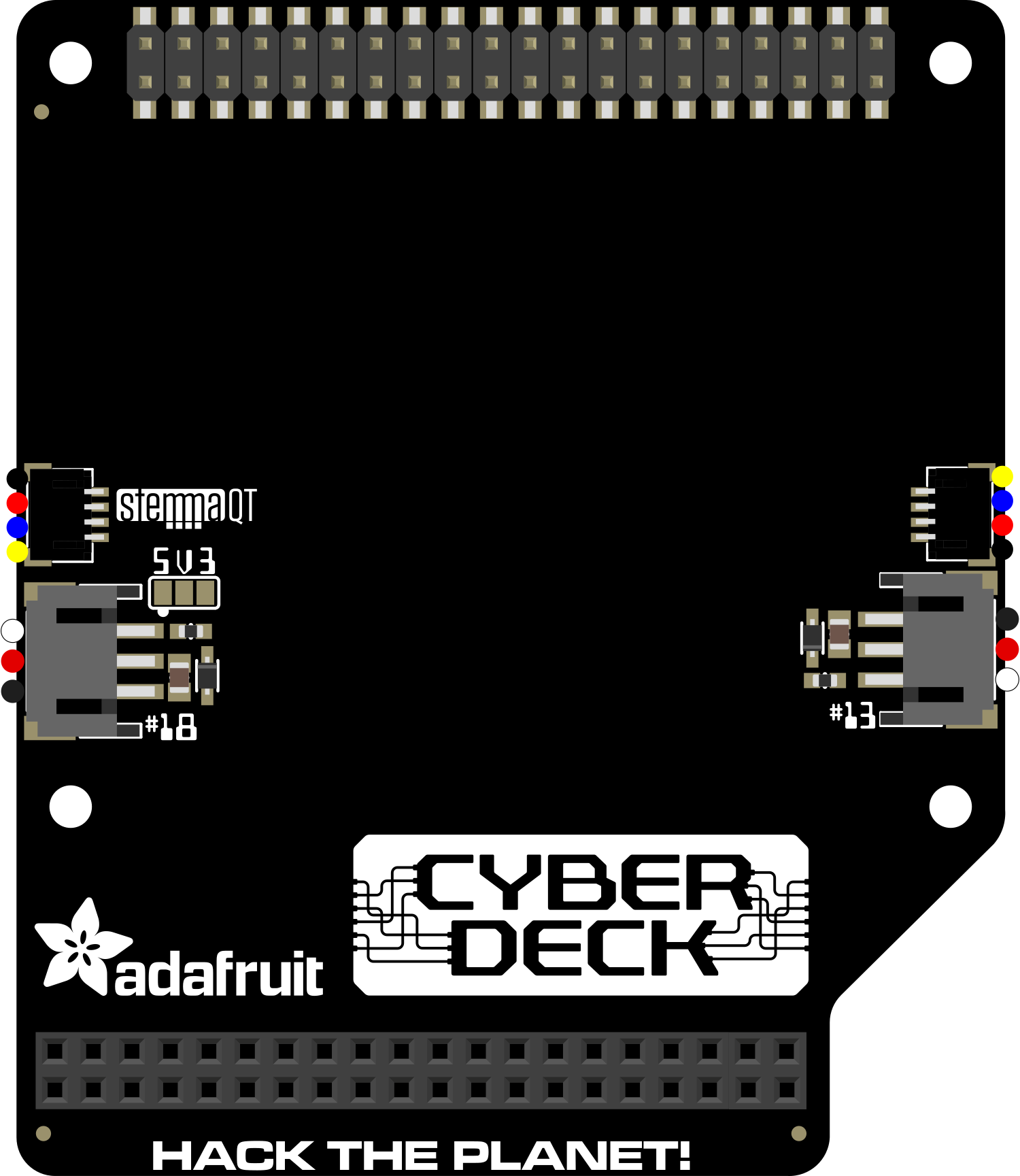
 Design with Adafruit CYBERDECK HAT in Cirkit Designer
Design with Adafruit CYBERDECK HAT in Cirkit DesignerIntroduction
The Adafruit CYBERDECK HAT is an innovative expansion board designed for Raspberry Pi enthusiasts and cyberdeck builders. This HAT (Hardware Attached on Top) is equipped with a 128x64 monochrome OLED display, capacitive touch buttons, a joystick, and additional components that enable users to create interactive and user-friendly interfaces for their projects. It is ideal for DIY projects, custom interfaces, and portable computing applications.
Explore Projects Built with Adafruit CYBERDECK HAT
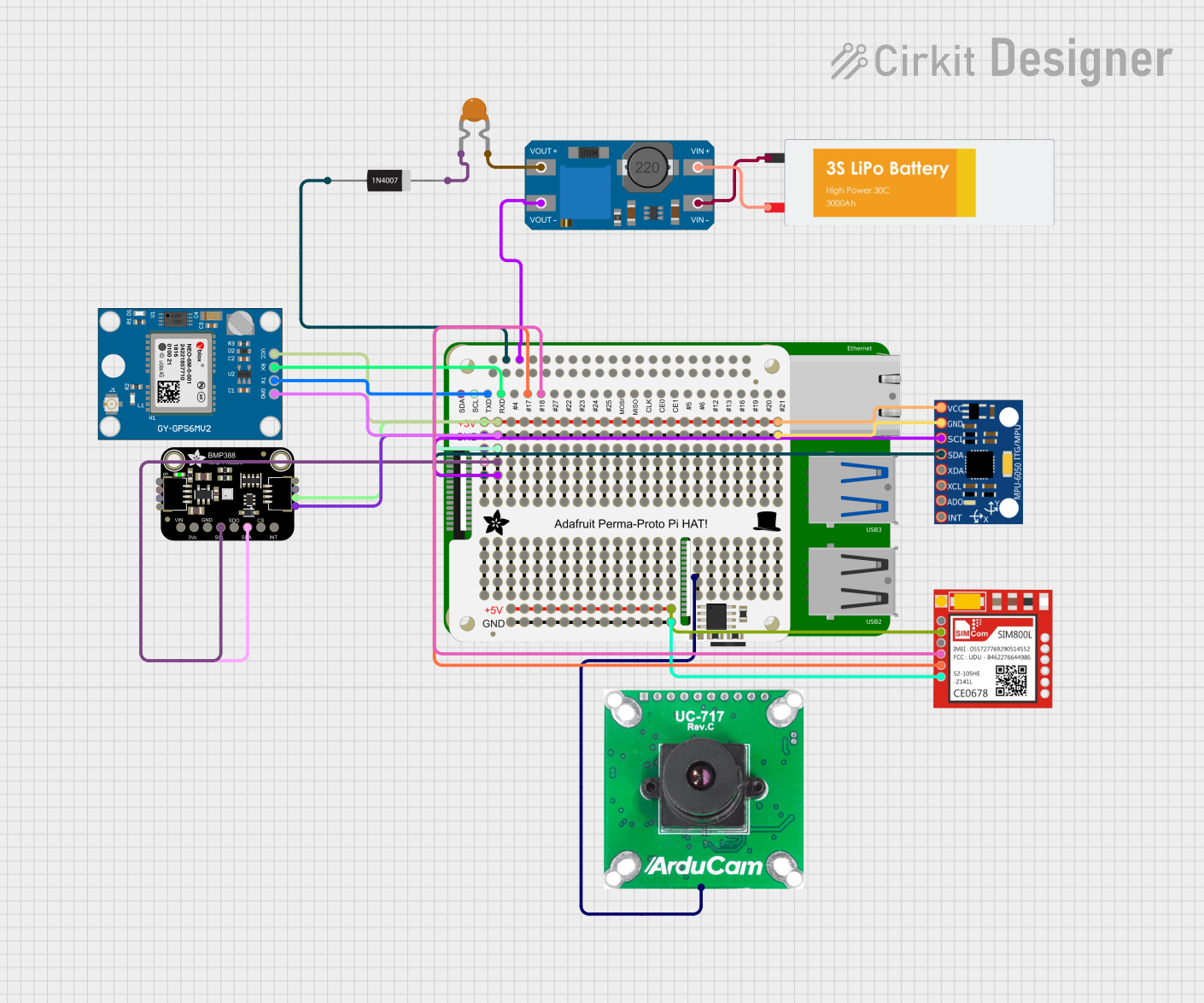
 Open Project in Cirkit Designer
Open Project in Cirkit Designer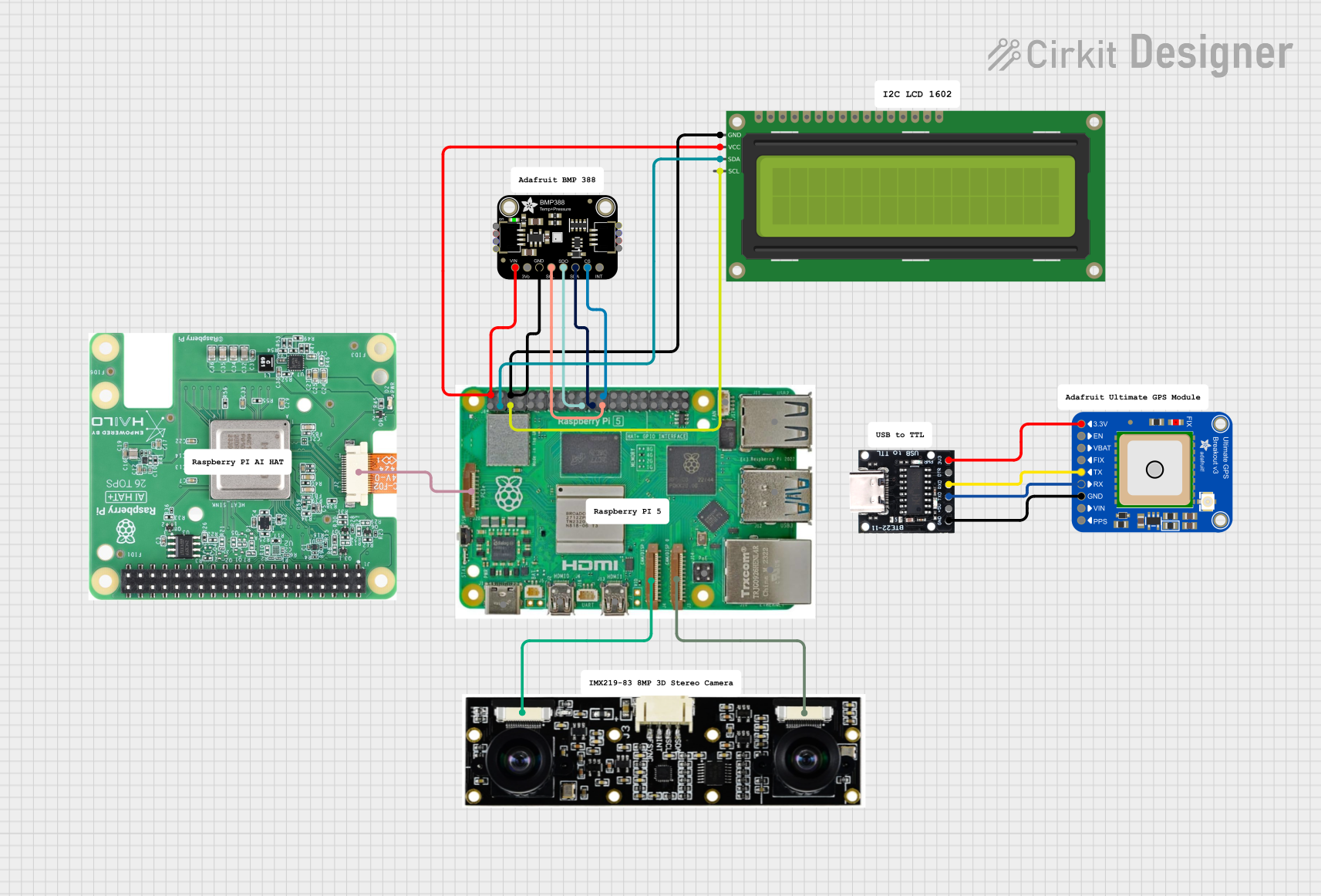
 Open Project in Cirkit Designer
Open Project in Cirkit Designer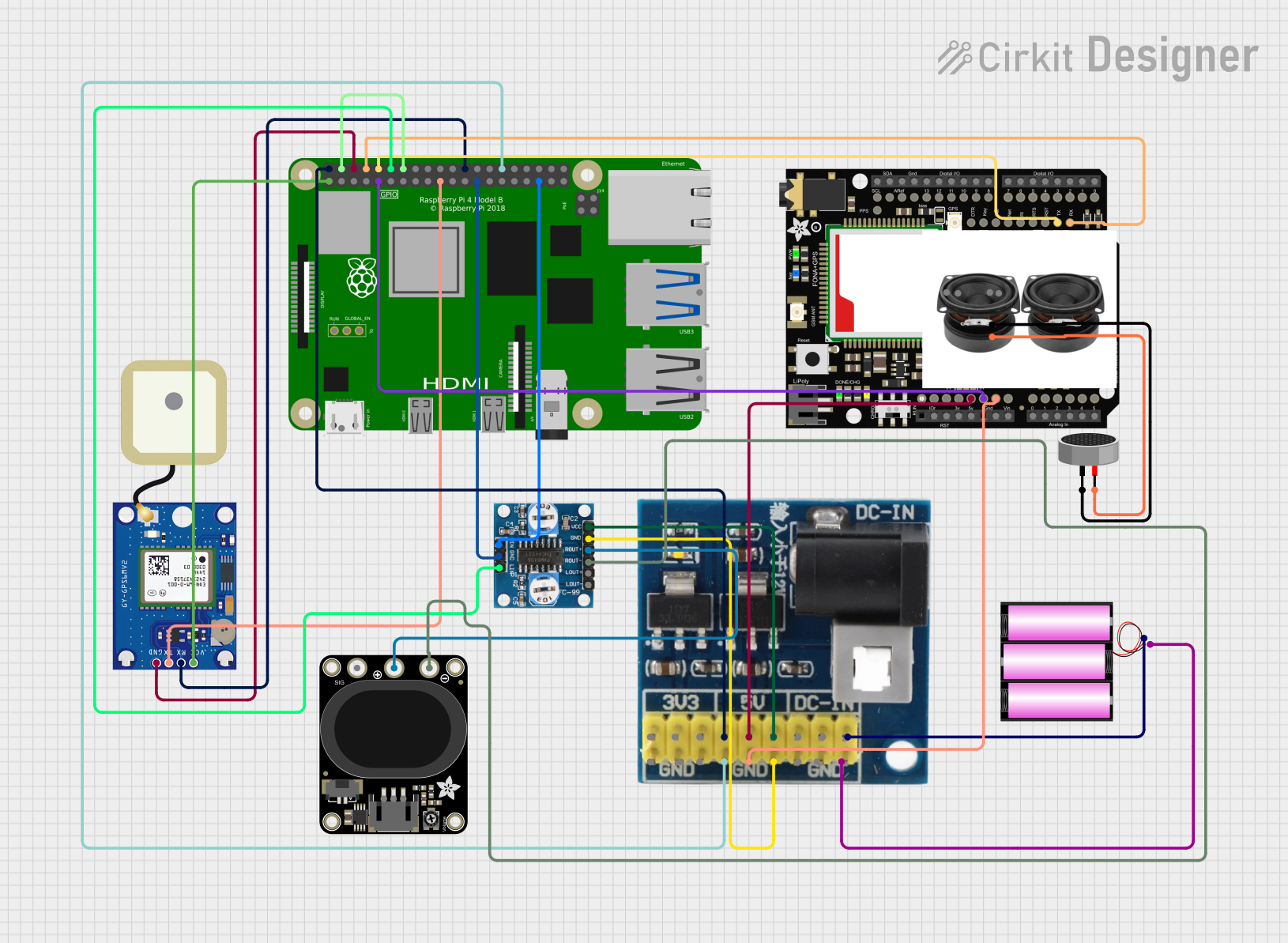
 Open Project in Cirkit Designer
Open Project in Cirkit Designer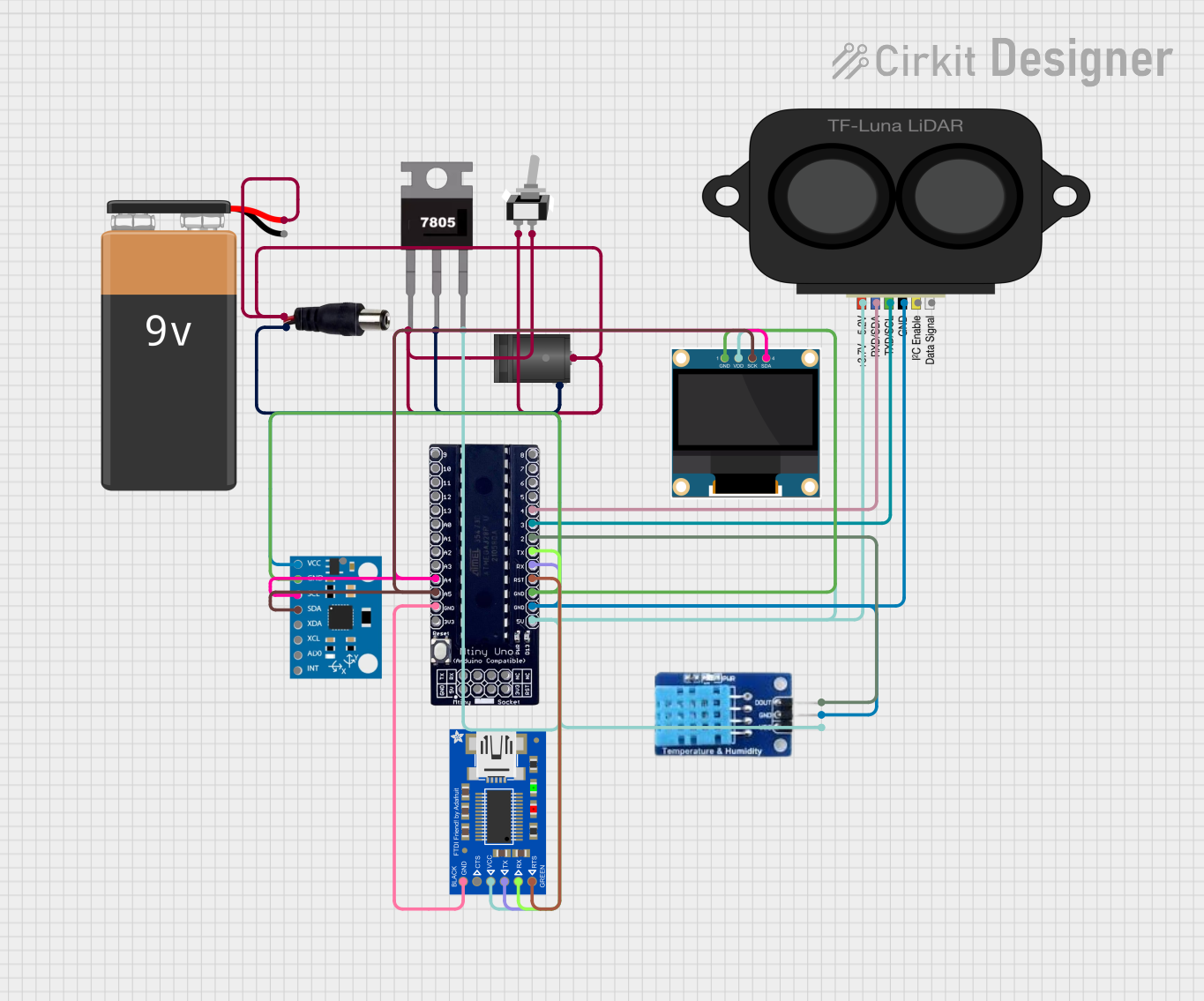
 Open Project in Cirkit Designer
Open Project in Cirkit DesignerExplore Projects Built with Adafruit CYBERDECK HAT

 Open Project in Cirkit Designer
Open Project in Cirkit Designer
 Open Project in Cirkit Designer
Open Project in Cirkit Designer
 Open Project in Cirkit Designer
Open Project in Cirkit Designer
 Open Project in Cirkit Designer
Open Project in Cirkit DesignerTechnical Specifications
Key Technical Details
- Display: 128x64 monochrome OLED
- Input: Capacitive touch buttons, joystick
- Compatibility: Raspberry Pi with 40-pin GPIO connector
- Dimensions: 65mm x 56mm x 7.2mm (without headers)
- Mounting Holes: Compatible with Pi HAT standard
Pin Configuration and Descriptions
| Pin Number | Function | Description |
|---|---|---|
| 1 | 3.3V | Power supply for the OLED display and touch IC |
| 2 | 5V | Power supply for the HAT |
| 3 | SDA (I2C) | I2C data line for communication with OLED |
| 4 | 5V | Power supply for the HAT |
| 5 | SCL (I2C) | I2C clock line for communication with OLED |
| 6 | Ground | Ground connection |
| ... | ... | ... |
| 39 | Ground | Ground connection |
| 40 | GPIO21 | GPIO for joystick and additional features |
Note: This table is not exhaustive and only includes key pins related to the CYBERDECK HAT's primary features.
Usage Instructions
Integrating with a Raspberry Pi
- Mounting the HAT: Secure the CYBERDECK HAT onto the Raspberry Pi's GPIO header. Ensure proper alignment of the pins.
- Software Setup: Install necessary drivers and libraries to interface with the OLED display and input devices. Adafruit provides a Python library for easy integration.
- Powering the System: Power the Raspberry Pi through its micro-USB or USB-C port, which will also power the CYBERDECK HAT.
Programming for Interactivity
To interact with the CYBERDECK HAT's components, you can use the provided Adafruit libraries. Here's an example of initializing the OLED display with Python:
import Adafruit_GPIO.SPI as SPI
import Adafruit_SSD1306
Raspberry Pi pin configuration:
RST = 24
Note the following are only used with SPI:
DC = 23 SPI_PORT = 0 SPI_DEVICE = 0
128x64 display with hardware I2C:
disp = Adafruit_SSD1306.SSD1306_128_64(rst=RST)
Initialize library.
disp.begin()
Clear display.
disp.clear() disp.display()
Important Considerations and Best Practices
- Power Supply: Ensure that the Raspberry Pi's power supply is adequate for both the Pi and the CYBERDECK HAT.
- I2C Addressing: If you have multiple I2C devices, ensure that each device has a unique address to avoid conflicts.
- GPIO Usage: Be aware of the GPIO pins used by the CYBERDECK HAT to avoid pin conflicts with other HATs or peripherals.
Troubleshooting and FAQs
Common Issues
- Display Not Working: Check the I2C connections and ensure that the Raspberry Pi has I2C enabled.
- Unresponsive Inputs: Verify that the capacitive touch buttons and joystick are correctly initialized in your code.
Solutions and Tips
- Enabling I2C on Raspberry Pi: Use
raspi-configto enable I2C interface under the "Interfacing Options" menu. - Testing Connections: Use the
i2cdetectcommand to confirm that the Raspberry Pi detects the CYBERDECK HAT.
FAQs
Q: Can I use the CYBERDECK HAT with other Raspberry Pi models? A: Yes, as long as the Raspberry Pi model has a compatible 40-pin GPIO connector.
Q: Do I need to install any specific software to use the CYBERDECK HAT? A: Yes, you will need to install the Adafruit libraries for Python to interact with the display and input devices.
Q: How do I customize the display output? A: You can use the Adafruit SSD1306 library to draw text, shapes, and images on the OLED display.
For further assistance, refer to the Adafruit CYBERDECK HAT forums and community resources.